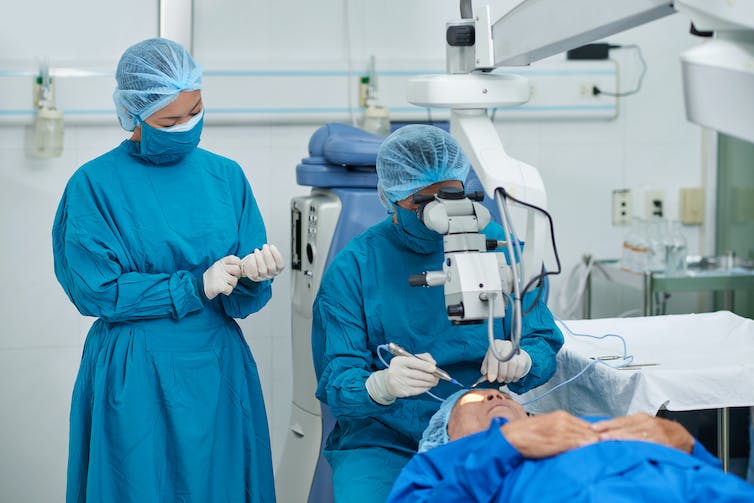One idea to address surgical wait lists and backlogs is the establishment of private surgical clinics.
But are they the best course of action?
As surgeries are shifted from non-profit institutions, such hospitals and community clinics, to for-profit clinics, it is crucial to take the trade-offs into account.
The private eye surgery facilities in Ontario are a fascinating case. They performed surgery outside of hospitals first in the province. Some have been in business for years, doing laser eye and cosmetic treatments on patients who pay up front. Ophthalmologists possess the majority of them.
The price of procedures conducted in for-profit clinics is more than if they were done in non-profit facilities.
For single-cataract surgeries, Ontario will pay clinics a set facility charge of $605, and for double-cataract surgeries, it would pay clinics $1,015 per patient.
Apart from surgeon fees, the facility charge is paid by the public system to pay overhead costs such as staff, technology, nurses, supplies, and facilities. Any payment that is higher than the clinic’s expenses is kept as profit.
For non-profit institutions, the corresponding overhead cost is closer to $500 per patient. Hospitals do not turn a profit, and the money they receive is used to provide for patient requirements.Five thousand cataract procedures will be performed at one clinic under a contract worth more than $3 million in facility fees and more than $2 million in surgeon billings. There is at least a $500,000 difference between the facility fee from just one contract and what a nonprofit hospital would get.
How could the health system be improved instead with that $500,000?
Health care staff must be hired immediately, which will cost money. Perhaps the funds from that one contract could be used to pay for thousands of hours of in-home care with personal support employees or to employ a number of full-time registered nurses to staff an operating room at a hospital.





